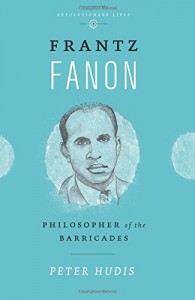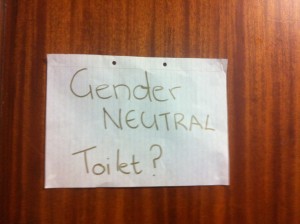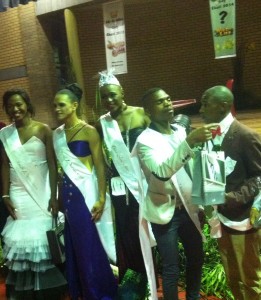Somizi Mhlongo is probably South Africa’s most popular gay celebrity, this past weekend he walked out of Grace Bible Church because of homophobic preaching. The pastor at the church was preaching that homosexuality is not found in nature, that dogs and lions do not practise homosexual behaviour. After walking out of the church, Somizi posted videos on his Instagram account talking about his ordeal at the Grace Bible Church. I was surprised that Somizi Mhlongo actually went to church. I am always under the impression that interesting people, worldly people, fabulous people, artists, academics, and generally people who don’t give a f*#% don’t go to church.
Of course, like most homophobes, the Ghanaian Bishop Dag Herward-Mils thought he was being clever, referencing nature as proof of the unnaturalness of homosexuality. The bishop is blithely oblivious to the hundreds of examples of homosexuality in the “natural” world. You can read more about these examples, here, here, and here.
According to Wikipedia “no species has been found in which homosexual behaviour has not been shown to exist, with the exception of species that never have sex at all. Moreover, a part of the animal kingdom is hermaphroditic, truly bisexual.” There are hundreds of studies that have debunked this widely held belief that homosexuality is not found in animals, indeed it is thriving in animals.
Also, the idea that “not even animals are homosexual” used by Dag Herward-Mils is based on the assumption that humans are above animals. The notion that we don’t do what animals do because we are better than animals is rubbish. We are a kind of animal. We are part of nature, no matter how far we try and distance ourselves from it. In fact, some environmentalists will argue that it is the problem, that we have distanced ourselves from nature so much and this has lead partly to environmental problems. Humans are not an entity existing outside of nature – we are part of it. The view that sexuality exists on a spectrum has been around since the publication of Alfred Kinsey’s study on “The Sexual Behaviour of the Human Male” in 1948. So the varied ways we experience and express our sexuality is part of the human experience. I doubt if Dag Herward-Mils has ever heard of Alfred Kinsey, or any other study about human sexuality for that matter.
I wonder if we show bishop Dag Herward-Mils that homosexual behaviour does exist in animals, will the bishop approve of homosexuality then?
This is not the first time the church in South Africa is implicated in homophobic rhetoric. The church has a history of homophobic speech throughout post-apartheid South Africa. There was the resistance of the inclusion of the protection of sexual orientation against discrimination in the South African constitution. Once the protection of sexual orientation was included in the constitution, there have been a number of talks about having it removed. The church was resistant to same-sex marriage. Church leaders and members of churches have been known to gather at Gay Pride marches in protest of Gay Pride. There was the court case of the lesbian woman that was dismissed by the Methodist Church because she revealed to her congregation that she was marrying her girlfriend. The homophobia in the church has never been shy, and so this incident with Somizi Mhlongo is an incident in a long line of homophobic incidents.
In the past I have written about how I view the church and the construction of Jesus as violence on black people. My views on black people and the church are clear: black people have no business in believing in god and the concept of Jesus. The concept of Jesus is enslavement. It is a concept designed to tame people, to make people unquestioning, to make people passive in their approach to life’s issues because something out there will solve their problems. It is a tool to quell, a tool to create a submissive population of believers instead of agitators. Therefore my view on black queers and the church is the same: black queers have no business in attending church and believing in the imported story of Jesus.
The most important question for me in this whole Grace Bible Church saga is: what are black queers doing at church? What is Somizi doing attending Grace Bible Church? Grace Bible Church has a “statement of faith” on their website that reads:
“With regards to sexual behaviour, we believe in heterosexual relationships between a natural man and a natural woman within the confines of lawful matrimony. Adherence to this stated principle of sexual behaviour is an inherent requirement of membership of Grace Bible Church.”
In other words, this is a place that has made it clear that it does not want Somizi. In one of the Instagram videos posted by Somizi, he laments that the church must state clearly that it does not want, or like LGBTI people. The “statement of faith” is a clear indication that the church does not endorse LGBTI people. It is clear to me in this statement that Somizi was never welcomed at this church. What is puzzling to me is not that the church is homophobic, that is expected, what I am struggling with is why did it take him so long to realize the church hates him. Why does he think THIS church won’t be homophobic when homophobia and other forms of discrimination are the bedrock of the church?
Let me be clear here, even if the church didn’t have this statement, I would still ask the same question: what are black queers doing at church?
I really wasn’t interested in engaging the Grace Bible Church “debate” but the violence of the church on black queers necessitates that I write this.
I have attended the funerals of black queers in South Africa. I have had conversations with my black queer friends about the omission of not only the sexual orientation of diseased black queers, but the omission of life partners, all to save face for the church.
I have seen black bishops like Dag Herward-Mils who preach homophobic hate on the Sunday sermon, but don’t make the connection of the hate they preach to the brutal often fatal violence experienced by black queers, particularly gender non-conforming black queers. The black queers who have survived physical and sexual assaults have told stories of how the perpetrators use the language of “not even dogs do this” or “this is the way God intended it.” With this in mind, I find the statements made by the Grace Bible Church spokesperson Ezekiel Mathole when interviewed by Eusebius McKaiser deplorable. To speak about the homophobic position of the church as if it doesn’t have consequences for people is irresponsible. This is not only irresponsible for Grace Bible Church, but it is irresponsible for all churches in South Africa.
The church in South Africa gets away with murder with being able to preach homophobic hate, and then turn around and call it their “biblical view”, their scripture, while black bodies are mutilated by people using the same rhetoric as the church. The homophobic taunts and jeers that black queers experience on a daily basis are partly born in the church rhetoric. The people who violate us are granted permission and then immunity by the church because people have “the right to believe” their homophobia and to preach their hate speech according to Mr. Ezekeil Mathole.
In South Africa there is a fear of the church. There is often a quiet diplomacy on the wrong doings of the church. The church has too much power in this country. The constitutional ruling on the case of the lesbian Methodist preacher who was let go from her post after she announced intention to marriage is indicative of the power of the church. Even the Constitutional Court shies away from calling the church into order. I am not going to be silenced by the church. What bishop Dag Herward-Mils said at Grace Bible Church is hate speech. That type of speech has no place in a constitutional democracy, in a country that’s recovering from a history of discrimination.
As I have shared before, I find it puzzling that black people are united in the idea of fighting against white imperialism, but do not see the church and the construction of Jesus as part and parcel of white colonial ideology. Jesus, just like Jan Van Riebeeck came on a ship. Jesus might as well have been on the Dromedaris. The concept of Jesus is as foreign as the Jacaranda tree in South Africa. As far as I am concerned, you are not serious about anti-colonial politics if the construction of Jesus remains intact. In fact, I don’t think anti-colonial politics can work with the ideology of believing in a white God and white Jesus that black people are supposed to pray to and submit themselves. The psychological calamity is of epic proportions. You don’t have to go far for evidence of the church madness; black people are eating grass, and drinking petrol for salvation. There is video evidence of this madness, here and here. The one that really gets me is the buckets of money; I mean literally buckets of money black people give to the church.
The church is a place of hate production. The venom that has also been unleashed by churchgoers on social media platforms in the aftermath of the Grace Bible Church incident is indicative of the hate. The homophobic statements uttered by Dag Herward-Mils are the kind of statements the church thrives on. The statements are not shocking, they are something we expect from the church, which is why the church is not a place for black queers, and not a place for blacks in general. Black people need to abandon the church. Black people need to abandon the fictitious idea of Jesus.
As for Somizi Mhlongo, he has an interesting life and doesn’t need Grace Bible Church. He is probably South Africa’s best choreographer and certainly the most famous gay South Africa celebrity, and I think he should follow in Kathy Griffin’s famous footsteps and tell bishop Dag Herward-Mils “Jesus can suck it.”
#GraceBibleChurch nazo! !!! @somizi pic.twitter.com/HqlMTMsypl
— Jo ε M ε ε k_ZA (@jmasiteng) January 22, 2017


